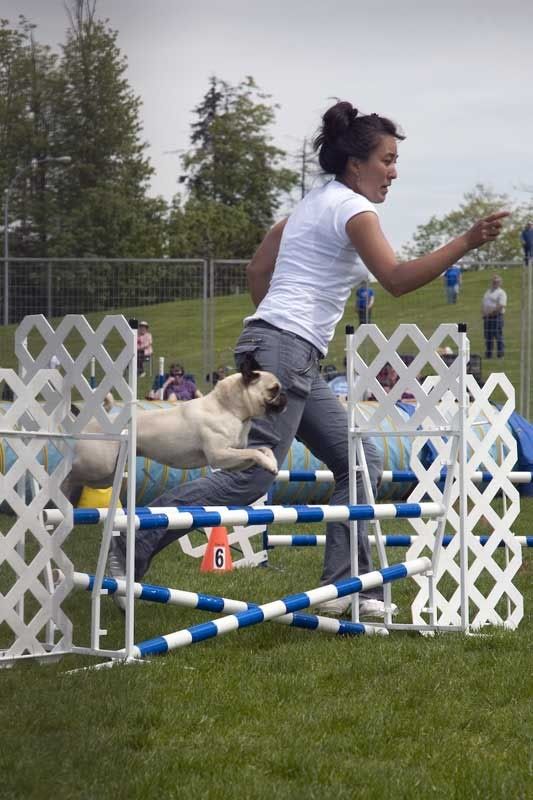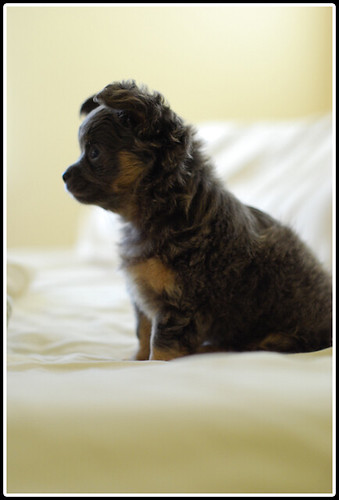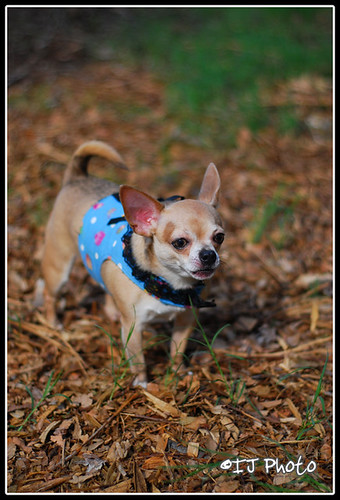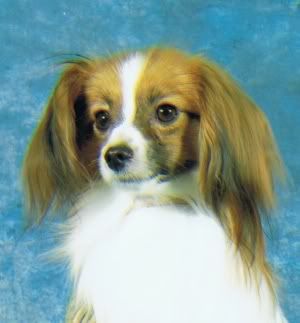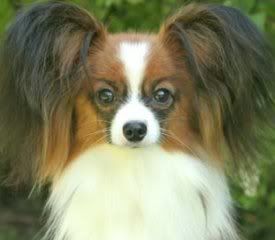I realized that even though I know my breed inside and out, I don't know much about any other Toy Breeds other than Papillons and Pugs (since I've looked into both breeds).
So... care to share information about your toy breed? I honestly don't think I'll ever consider anything other than chis and paps, but I'm curious about the other toys since large breeds are mainly discussed on here.
I was drawn to Chihuahuas because of their terrier like qualities... and how they act like big dogs in little bodies. I lived in an apartment and wanted a dog, but didn't want a typical "toy" breed.
Chihuahuas have all the qualities I want in a little dog... they are loving, intelligent, alert, confident, etc.
AKC describes them as...
In terms of looks, the one thing that sets them apart from other breeds are their apple domed heads. They should weigh between 2-6lbs (most often, 4-6lbs).
So... care to share information about your toy breed? I honestly don't think I'll ever consider anything other than chis and paps, but I'm curious about the other toys since large breeds are mainly discussed on here.
I was drawn to Chihuahuas because of their terrier like qualities... and how they act like big dogs in little bodies. I lived in an apartment and wanted a dog, but didn't want a typical "toy" breed.
Chihuahuas have all the qualities I want in a little dog... they are loving, intelligent, alert, confident, etc.
AKC describes them as...
Graceful, alert and swift-moving with a saucy expression, Chihuahuas are highly intelligent and should not be underestimated even though small in size. The breed can be any color – solid, marked or splashed and the coat may be long or short.
Chihuahuas are alert dogs with terrier-like qualities. They are good with families if the children are gentle and patient. Because of their small size, they require little exercise and are good city dogs, but can be sensitive to cold temperatures. Smooth coated Chihuahuas need very little grooming due to their short hair. Long coats need occasional brushing but still require minimal grooming.
Temperament
Alert, projecting the ‘terrier-like’ attitudes of self importance, confidence, self-reliance.
Chihuahuas are alert dogs with terrier-like qualities. They are good with families if the children are gentle and patient. Because of their small size, they require little exercise and are good city dogs, but can be sensitive to cold temperatures. Smooth coated Chihuahuas need very little grooming due to their short hair. Long coats need occasional brushing but still require minimal grooming.
Temperament
Alert, projecting the ‘terrier-like’ attitudes of self importance, confidence, self-reliance.


